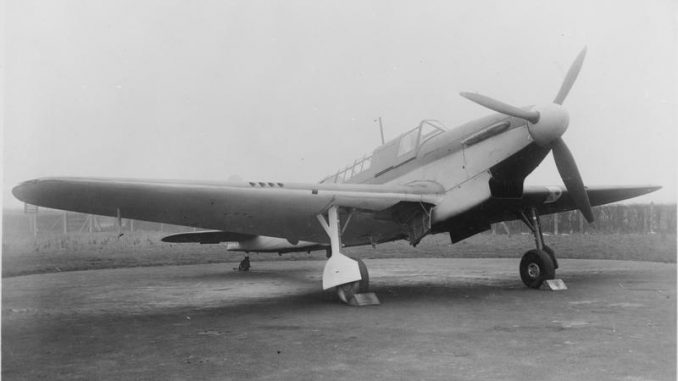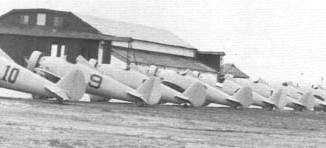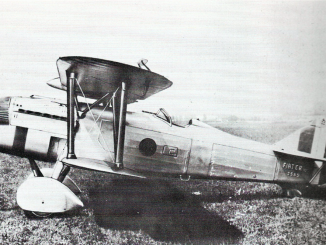
The Fairey Fulmar represents the philosophy of the Fleet Air Arm just prior to World War II, that navigational science was not advanced enough to allow for the creation of a single-seat naval fighter. Therefore, the FAA preferred two-seat fighters so that the pilot could be supplemented with a navigator. The Fairey Fulmar was derived from an earlier design for a light bomber, the P.4/34, which was similar to the Fairey Battle. In its fighter guise, the Fulmar would become the Royal Navy’s most important fighter during the first half of the war.
The Fulmar was fitted with Rolls-Royce’s superlative Merlin engine, but unfortunately other elements of the design meant that the aircraft could never hope to match the Supermarine Spitfire’s performance. Aside from the extra crew member and his equipment, the Fulmar was equipped with a folding wing mechanism, catapult and arrestor equipment that all combined to add weight to what was already quite a large aircraft. Generally the aircraft performed well enough and was ordered into service, with the first production examples reaching the Fleet Air Arm in late 1940.
Although the Fulmar saw most of its service in the Mediterranean where it did well against the Italian air force, it also saw limited service in the Indian Ocean. Several Fulmars were assigned to 803 and 806 Squadrons and the RAF’s 273 Squadron, which were based on Ceylon during the Japanese attack on that island in April 1942. They intercepted the incoming Japanese attack force and claimed several victories, but the Fulmars were outclassed by the escorting Zeros and several were shot down.
Later the Fulmar also flew from Royal Navy carriers to support the landing on Madagascar, defending British and Commonwealth troops from attacks by the small Vichy French air force on the island.
Soon thereafter, the arrival of American-built fighters like the Martlet (F4F Wildcat) and later the Gannet (F6F Hellcat), as well as navalised versions of the Spitfire, meant that the Fulmar was surplus to requirements and it was soon relegated to second line duties.
Fairey Fulmar Specifications
| Fairey Mk I Fulmar | |
| Role | Fighter |
| Crew | 2 |
| Powerplant | 1x Rolls-Royce Merlin VIII (1,275hp) |
| Speed | |
| Ceiling | 0ft |
| Range | |
| Armament | 8x Browning M1919 .303in Machine Gun |
| Ordnance | |
| Dimensions | 0ft 0in (length) 0ft 0in (wingspan) 0ft 0in (height) |
| Weight | |
| Number produced | 250 |
| Fairey Mk II Fulmar | |
| Role | Fighter |
| Crew | 2 |
| Powerplant | 1x Rolls-Royce Merlin 30 (1,360hp) |
| Speed | 272mph (max) |
| Ceiling | 27,200ft |
| Range | 780 miles (internal) |
| Armament | 1x Vickers K 8x Browning M1919 .303in Machine Gun |
| Ordnance | 500lb bombs |
| Dimensions | 40ft 2in (length) 46ft 4in (wingspan) 14ft 0in (height) |
| Wing Area | 342 sq.ft. |
| Weight | 7,015lb (empty) 9,672lb (gross) 10,200lb (max) |
| Number produced | 350 |
| Fairey Mk II NF Fulmar | |
| Role | Night fighter |
| Crew | 2 |
| Powerplant | 1x Rolls-Royce Merlin 30 (1,360hp) |
| Speed | |
| Ceiling | 0ft |
| Range | |
| Armament | |
| Ordnance | |
| Dimensions | 0ft 0in (length) 0ft 0in (wingspan) 0ft 0in (height) |
| Weight | |
| Radar | AI Mk IV (Air intercept radar) |




Thanks for this feature. The F4F was known to the Brits as the Martlet not the Martley